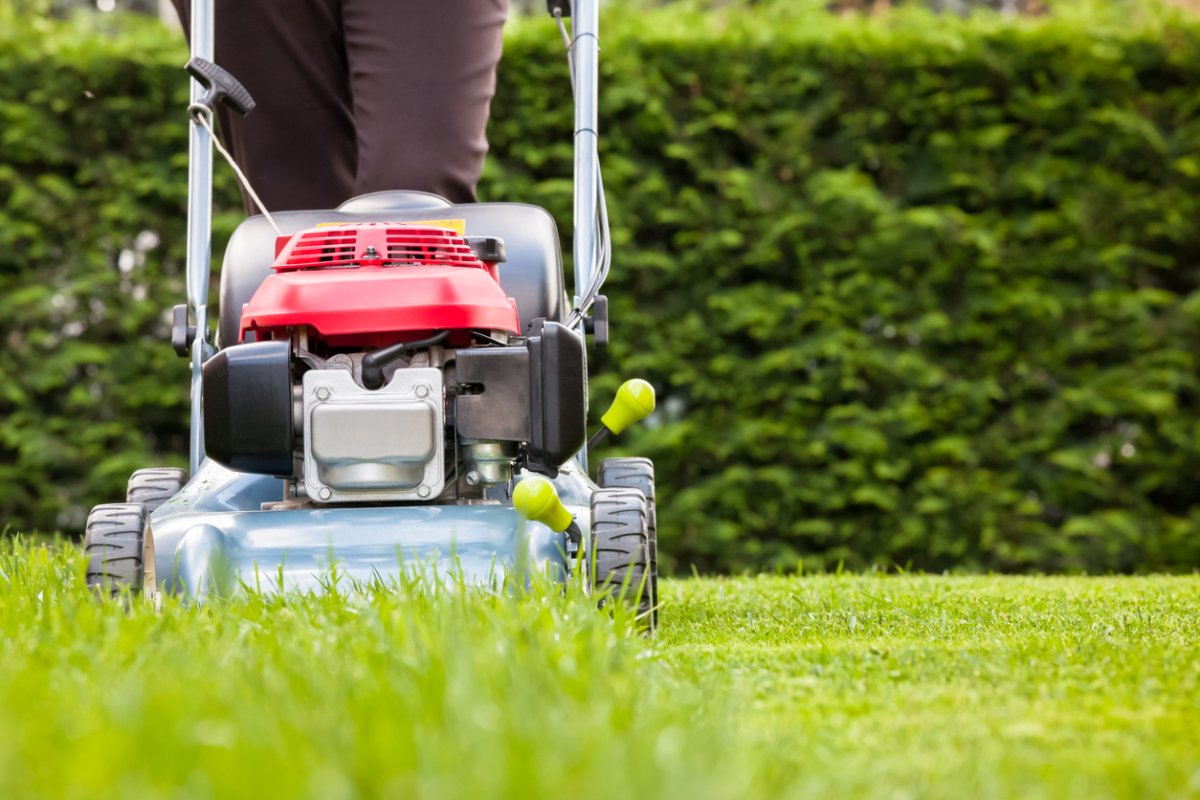We may earn revenue from the products available on this page and participate in affiliate programs. Learn More ›
Vehicles on the roads aren’t the only emitters of greenhouse gasses into our atmosphere. Use of gas-powered lawn equipment such as lawn mowers, leaf blowers, and string trimmers, also releases toxic emissions that are threatening the health of people in our communities. With this new knowledge, many people are deciding to make the switch to all battery-powered lawn equipment—and some cities are even starting to ban the sale of gas-powered options.
If you’re ready to ditch your gas equipment and switch to battery-powered alternatives, you might be wondering whether you’ll end up saving money. Gas is expensive now, but how much electricity will charging the battery for a new robot lawn mower and other new tools end up pulling? Keep reading to find out how switching to electric equipment will—or will not—affect your energy bills.
RELATED: The 6 Best Robot Lawn Mowers for Automated Maintenance, Tested
Lawn Mowers

While the exact cost to charge the battery for a cordless electric mower can vary based on the battery size, it should still cost less than the equivalent expense for fueling a gas-powered model. Most push mowers use between ¼ and ½ gallon of gas every hour. Given the current average fuel price of $3.96 per gallon, that means you’d be spending between 99 cents and $1.98 for each hour of mowing.
Most battery-powered lawn mower batteries, like the one for this Walker self-propelled mower at Amazon, can run about 45 minutes to 1 hour between charges. The cost to charge will depend on the number of kilowatt-hours. Kilowatt-hours are calculated by multiplying the watts by the charge time and dividing that number by 1,000. As an example, a 600-watt battery that takes 2 hours to charge would require about 1.2 kilowatt-hours of electricity each hour [(600 x 2) ÷ 1,000], while a 1,400-watt battery would require 2.8 kilowatt-hours of electricity [(1,400 x 2) ÷ 1,000].
Given the national average cost of 17 cents per kilowatt-hour, that means you’d be spending 20 cents to charge the 600-watt battery or 48 cents to charge the 1,400-watt battery. Both of these figures are significantly less expensive than the cost of fuel.
Leaf Blowers

A battery-operated leaf blower is also going to end up costing less than a gas-powered model. To calculate the energy consumed by a battery-powered leaf blower, multiply its voltage (V) by the charging capacity (amp hour, or Ah). This will determine the watts consumed each hour. Take the EGO Power+ Lithium-ion Cordless Leaf Blower—the top pick in our guide to the best battery-powered leaf blowers—as an example. It has a 56V, 5Ah battery, meaning it consumes 280 watts per hour, or 0.28 kilowatt-hours. With the average 17-cent price per kilowatt-hour, it would cost you about 5 cents for each hour of use.
If you have a gas blower, on the other hand, you’ll need to purchase gasoline (and sometimes oil as well). Even fuel-efficient models are going to cost more than 5 cents for an hour of use.
String Trimmers

Battery-powered string trimmers such as the Stihl FSA 60 R, which one of our experts had the opportunity to review, won’t take much electricity to operate. In fact, the Stihl should only cost about 2 cents for each hour you use it. It has a 36V, 3.9Ah lithium-ion battery. This means it consumes about 140.4 watts per hour, or 0.14 kilowatt-hours.
While string trimmers don’t consume as much gasoline as some lawn equipment, most still use about ¼ gallon each hour. This means that it will cost about 99 cents for fuel each time you use your gas string trimmer.
RELATED: We Spent Over 20 Hours Testing the Best Battery Trimmers to Find the Best Options
Chainsaws

Making the switch from a gas-powered chainsaw to an electric model could save about 99 cents for each hour of use. Gas models consume about ¼ gallon of gas every hour, working out to nearly a dollar in fuel costs.
Compare this to the 3 cents per hour it costs to operate the Greenworks 40-Volt Brushless Cordless Chainsaw—selected as the best overall electric model in our researched guide to the best chainsaws. With the 40V, 4Ah battery, this model uses only about 160 watts, or 0.16 kilowatt-hours of electricity. That’s a pretty substantial savings over a gas-powered version, plus you’ll be helping the environment.
Snow Blowers

A snow blower can be invaluable when it comes to clearing driveways and walkways. But, just how much money can you save by using an electric model over a gas-powered option? On average, a 5-horsepower (hp) snow blower will consume about ½ gallon of gas each hour. With the current fuel prices, this means that you’d be spending about $1.98 each time you operate it.
An electric model is going to cost much less to operate. The Ego SNT2405 Power+ 24-inch Self-Propelled Snow Blower—reviewed by one of our experts—has a 56V, 7.5 Ah battery, so it consumes about 420 watts, or 0.42 kilowatt-hours. This works out to just about 7 cents per hour.
RELATED: We Tested Over a Dozen Snow Blowers and This Ryobi Is a Heavy-Duty Machine in Compact Form


